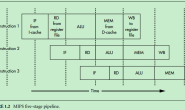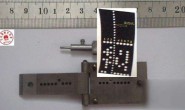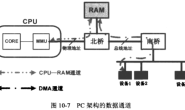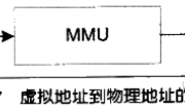1 Main memory RAM configuration:
Zeroed at power-up for cold-boot to prevent parity errors.
Configured and enabled by ROM code at system power-up.
2 Cache memory RAM configuration:
Usually disabled at power-up, enabled by VxWorks pre-kernel initialization code.
Provide cache management libraries.
For some architectures the instruction cache is enabled at power-up for faster VxWorks boots.
3 ROM – Non-volatile property allows:
System boot code storage.
Hardware environment configured to jump to a ROM address atpower-up.
To program a ROM, it is removed from hardware environment and taken to a ROM “burner”.
4 Flash
(1) Flash is non-volatile memory which can be modified programmatically.
(2) Used as a “silicon” hard disk:
<1> System boot code storage.
<2> Hardware environment configured to jump to a flash address atpower-up.
<3> Maintaining data integrity during power-outs.
<4> Access times slightly slower than DRAM but faster than
ROM.
5 Flash vs PROM
(1) Flash and ROM use similar memory cell technology:
<1> Storage transistor employs transistor tunnelling.
<2> No battery to provide non-volatility.
<3> Access times are roughly the same.
(2) Flash power supply unit allows flashto be modified without being removed from hardware environment.
<1> Contents may be modified over a network interface.
<2> Contents may be modified by application code.
<3> ICE maybe a savior when bootloader within flash crash.
(3) Many hardware environments use jumpers to configure:
<1> System to jump to a flash address or a PROM address atpower-up.
<2> Size of on board flash/PROM.
6 NVRAM
(1) Non-volatile RAM:
<1> Non-volatility usually provided by battery.
<2> May be implemented using CMOS RAM, battery-backed SRAM, or flash.
(2) Units may contain a programmable time-of-day (TOD) clock:
<1> TOD information is stored inNVRAM.
(3) Used to store boot parameters for VxWorks image:
<1> VxWorks boot parameters may useup 255 bytes.
(4) If a hardware environment does not have NVRAM, boot parameters are statically linked into boot code.
Declaration:
Excerpt from Chapter 2 System Hardware, 2.4 Memory Of 《Tornado BSP training workshop》




